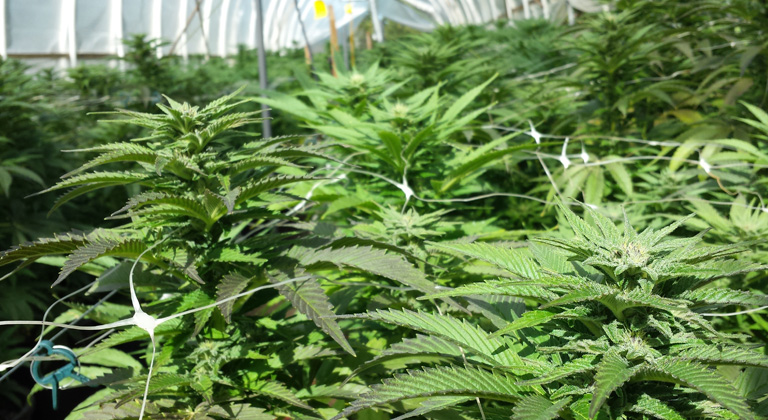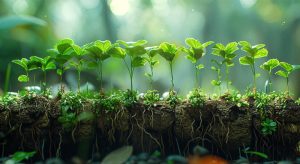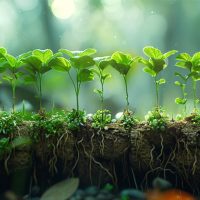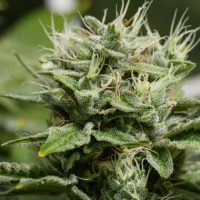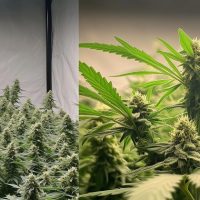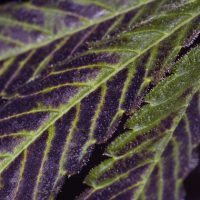What is an automatic irrigation system for cannabis cultivation?
Automatic irrigation systems are structures for water distribution among plants that reduce the effort of manually watering them one by one.
The introduction of automation has helped modernize irrigation projects, which is a practice whose implementation dates back to at least 3400 B.C. Today, the inclusion of electronic systems to control factors like water frequency and volume significantly reduces the effort required by the grower, especially in large outdoor cultivation areas, hard-to-reach locations, or when the person responsible is not present.
An automatic irrigation system always consists of:
- Water dosing system: drippers, microtubes.
- Water distribution system: pipes, elbows, stoppers, etc.
- Water propulsion system: pumps or network pressure.
- Timed control for irrigation activation/deactivation (optional).
Benefits of an automatic irrigation system in cannabis cultivation
- Efficiency in water distribution: All plants receive the same amount of water and nutrients.
- Once installed, it reduces the workload.
- Enables uniform growth of your cannabis plants.
- Efficient watering can reduce the occurrence of certain pests that appear in times of excessive humidity, such as thrips.
- No dependence on other people. No more asking your friend to water your plants during your holidays!
- The irrigation solution can include fertilizers or nutrients.
- Customizable and adaptable to the needs of your grow.
- Interesting option for SOG setups, as watering can be challenging among closely packed stems.
Disadvantages of automatic irrigation in cannabis cultivation
There are several factors to consider if you want to implement your own automatic irrigation system.
- It requires prior study to establish factors such as frequency, volume of water displaced by the drippers, design of the water network, amount of nutrients, etc.
- Even though it helps the grower to be absent at times, constant plant inspection shouldn’t be neglected. An automatic system should reduce the time spent on watering, but should not be an excuse for neglecting the grow.
- It requires an initial investment in both materials and automation systems.
- Drip irrigation might be attractive for a series of identical plants with similar needs. Otherwise, deficiencies could appear since some strains might need more irrigation than others.
- It is vital to check for possible salt build up in the irrigation system and in the irrigation area of the pots. Otherwise, drippers might get blocked and stop providing water.
- The distribution of the irrigation around the plant must be controlled. Poor organization might lead to more water on one side than on the other, with the plant only developing part of its root system and ultimately producing an uneven result. Therefore, it is recommended to have multiple drippers around the stem to ensure uniform irrigation.
Automatic drip irrigation is a favorite among growers. However, if you opt for manual watering, you can still optimize the system by using something like a shower-type watering lance kit, which separates the water jets, thereby softening and oxygenating the water. This system also allows the use of purified and nutrient-rich water from a reservoir.
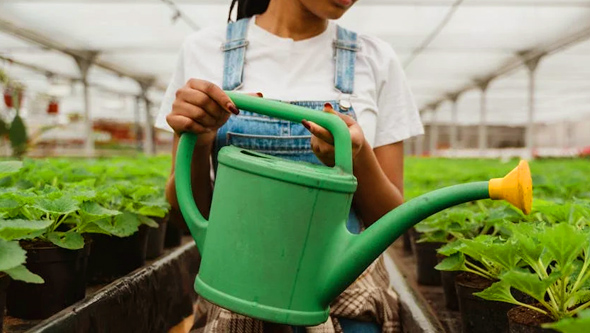
Steps to set up an automatic irrigation system in your cannabis grow
A grow with an efficient automatic irrigation system can remove a significant part of the workload for the grower. Below is a list of steps to follow to install a successful automated system.
- Step 1: Select the drip system
Before designing and setting up an automatic irrigation system, consider the type of grow you’ll be carrying out and adjust to its needs, focusing on the plants’ healthy development to help you achieve optimal results.
Automatic irrigation systems for cannabis cultivation are quite similar, despite the existence of an infinite number of designs. What makes them different is the water outlet, that is, the installed drip system. Drip irrigation is the most popular among growers, and can be easily and effectively customized. However, there are other systems such as irrigation watering, which are automated with systems like Wassertech’s.
Among the main drip systems, the most common in cannabis cultivation are:
Self-compensating drippers: They regulate the water flow at a constant rate, regardless of the water pressure, thereby ensuring an even distribution of water throughout the system.
This system is perfect for cannabis cultivation since the plants need uniform water and nutrient distribution to avoid uneven growth.
Stake dripper: This simple but highly effective system uses the dripper as both a dripper and a stake, significantly reducing costs and simplifying assembly. The system consists of a watering stake and a thin tube that supplies the water. It’s the most economical and quickest system to set up.
Adjustable drippers: These drippers allow manual water flow adjustments, tailoring the amount of water that reaches the plant and meeting the specific needs for each strain or stage of growth.
Fertigation drippers: They enable the addition of fertilizers to the plant, ensuring they reach the roots directly in a controlled manner.
Self-cleaning drippers: These include an automatic cleaning mechanism that expels residue or suspended particles, reducing the risk of blockage. In a normal cannabis grow, the use of different fertilizers can lead to blockages, so these drippers are incredibly useful. Below we’ll explain how to clean a dripper manually.
Underground drippers: These are designed to be buried in the soil for direct irrigation of the roots. They’re protected against root intrusion, which makes them durable. Perfect for maximizing water use in warm outdoor environments or greenhouses where evaporation can be troublesome. However, they’re sensitive to clogs if the water isn’t filtered sufficiently.
Multi-outlet dripper: A single water inlet serves several pots via 6 or 12 outlets. Effective for watering a large number of plants and saving space on pipes. However, they can clog easily, and are less adaptable to the needs of each plant. Ideal for indoor grows where pots are close together.
- Step 2 – Design the system and list the materials
An automatic irrigation system for your cannabis plants starts with the design of the system’s pipes, connectors, microtubes, and joints in various shapes and forms to set up the circuit. You should also list all the materials required so you can purchase them together at La Huerta and enjoy some great discounts.
It’s highly likely you’ll need pipes, T-connectors, joints, elbows, stoppers, etc. Knowing the exact number of those that you need can greatly help with organisation.
- Step 3 – Install drippers and stakes
Drippers are a crucial part of the automatic irrigation system. Their function is to deliver water to the plant’s pot or base. They require careful installation and precise adjustment to supply the plant with the liquid accurately.
- Place each dripper in its final position and attach the microtubes to each dripper. Now you know the path the pipes need to take so the microtubes can reach them without any issues.
- Experts recommend placing two or three drippers around the base of the plant, evenly spaced, to avoid uneven watering.
- A well-designed distribution will help you minimize the work and money invested. Think carefully and sketch the pipe design based on where you’ve placed the drippers. Aim for an efficient design, avoiding unnecessary pipe loops.
- Stakes are simply supports for the microtubes that are inserted into the substrate for better water conduction. There are drippers with built-in stakes that can simplify the work and make the system more economical.
- To prevent fungi and diseases ensure that the irrigation water doesn’t wet the stem or leaves.
- Monitor the potential buildup of mineral salts from the fertilizers. By watering only certain parts, the nutrient solution might accumulate in one spot, reducing its effectiveness in nourishing the plants and even blocking the pipes and drippers. We explain how to clean them properly in our “Frequently Asked Questions” section.
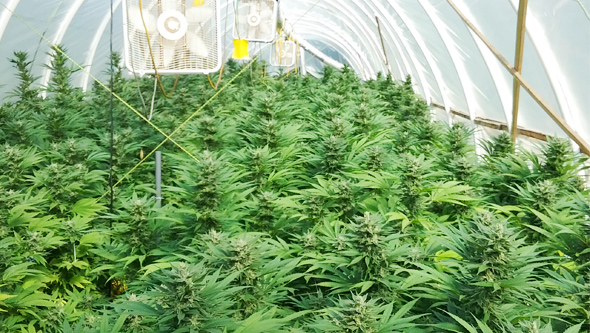
- Step 4 – Set up the pipe system and attach filters
Now it’s time to install the pipes for the automatic irrigation setup following the design developed earlier, to meet all the growing needs while considering most of the challenges that may arise.
Drippers can be installed through microtubes – you need to make a hole in the pipe wall with a drill or a similar tool (if you use the stake dripper, you can make the holes in the pipe with the dripper’s tip). It’s advisable to place two or three drippers around the base of the plant, evenly spaced, to avoid uneven watering.
Filters are usually placed at the water entry point. They’ll prevent potential clogs and major issues, provided they’re regularly checked to avoid blockages. You can even install an osmosis filter to provide the purest water possible to your plants.
There are many types of filters, but the most commonly used are mesh (120 – 200 microns) or disc filters, which feature grooved discs of various thicknesses that can capture the finer water particles.
Once you finish your entire installation, including all the parts, test your system and ensure that there are no water leaks anywhere. A few drops of water escaping from an outdoor setup isn’t a concern, but a leak in a home system, for instance, can cause a serious problem. This highlights the importance of good quality materials, with high levels of flexibility and resistance to potential leaks.
- Step 5 – Install an automatic irrigation control system
The irrigation control system is the main automation that gives purpose to the irrigation network. It usually consists of an electronic box that manages certain factors, especially the watering time and water flow through the system, and ensures the daily switching on and off of the network.
- This device is typically placed between the water tank and the system itself, acting like an automatic door that opens and closes according to the set schedule.
- Although there are some systems that connect the main hose to a water tap, this is not the best recommended practice. For this connection to work properly, a pressure reducer is needed to provide the right water force to prevent bursting the pipes. Additionally, this requires leaving the tap open and then setting the system so it opens and closes automatically. If this fails, it could lead to a significant loss of water, so it’s better to always provide water from a tank – if something goes wrong, only the water in that tank will be spilled.
- A control system with a timer can be purchased for little money, making these controllers the most suitable for small indoor spaces or with few plants outdoors.
- The size of the grow and the features of the space you use will define the entire system design and the choice of technology.
For instance, La Huerta Grow Shop offers the Wassertech Automatic Irrigation System for 10 plants. This is a timer that includes a small submersible water pump.
This small device can supply water to plants based on a variable time schedule, and works with batteries, so it’s completely independent. Without the need for pipe installation, it’s an excellent automation system for a small-sized indoor or outdoor grow. It’s perfect for situations where plants are unsupervised for a few days.
The most common type of automation is simply a timer clock that activates and disables the power supply that feeds the water pump.
- Step 6 – Others: water pumps, pressure reducers, nutrient tanks, and other accessories.
The irrigation system can be completed with various accessories, which can be essential depending on the specific circumstances of the grow.
- Water pumps are devices that carry water from the tank to the main pipe, overcoming slopes and long channels, and ensuring the pressure reaches the end of the circuit. It should be synchronized with the timer.
- Diffuser stone or water oxygenator + air pump: This is a stone connected to a small air pump (like those in aquariums) which provides oxygen to the water in the tank. This benefits the plants with extra oxygen, improving root growth and preventing the water from being spoiled by the presence of microorganisms that live in stagnant water.
- Nutrient tank: As mentioned above, this is a compartment where fertilizers and additives are added. This tank should be the right size to supply water to all the growing plants.
- Pressure reducer: A device that can be placed right after the water tap to reduce pressure, avoiding leaks caused by overpressure.
- Osmosis filters: Whether simple or more complex, filters help to supply plants with the purest possible water, avoiding salts in suspension that could hinder their proper development.
After all this hard work, it’s recommended to conduct functionality tests to detect possible faults, leaks, faulty drippers, or blockages.
- Step 7 – Calculate water volume
Calculating the volume of water that you need to irrigate all your plants is one of the most important aspects, as it determines whether the entire system delivers the expected results.
The time-volume irrigation frequency must be determined after observation and verification of the soil moisture. Once you know how much water each plant needs, the next step is to determine how much water each dripper releases per minute. With that data, all that’s left is to calculate how long to keep the irrigation on, using the following formula:
Water needed per plant (e.g., 1 liter) / dripper flow rate per minute = number of minutes of watering
With two drippers, halve the time.
Tips for maintaining your irrigation system
Some things to keep in mind to ensure everything runs smoothly:
- Regular cleaning: Sediment buildup can block drippers. Make sure you clean your irrigation system periodically.
- Check the timer: It’s crucial to regularly check the timer or control system to ensure it’s working correctly and there are no irrigation failures.
- Seasonal adjustments: Change watering times based on the time of year and plant condition. In hotter periods, your plants will need more water.
- Continuous system review: Every visit to the grow should include a to-do list to check weak points in the design and repair any issues. Duct tape won’t perform miracles; it’s better to stop and make a solid repair than to rely on makeshift solutions and botched fixes.
Conclusion
A well-designed automatic irrigation system can save the prudent grower a lot of work and cater to both indoor and outdoor grows.
An automated system can assist the grower with routines, but the plants shouldn’t be left solely in its care because there are countless irrigation-related contingencies that must be closely monitored to achieve the best result. With a correctly functioning system, both the plants and results will be optimal, helping the grower to achieve the goal of saving both time and effort. Additionally, checking your plants daily will help detect any arising problems, whether they are related to the irrigation or to other issues.
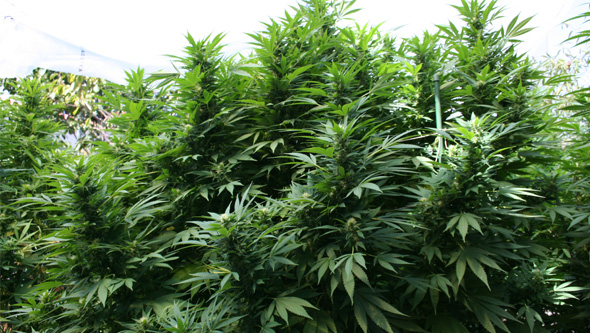
FAQs (Frequently Asked Questions)
How much water should I use in an automatic irrigation system?
It depends on the size of your grow and the type of soil, but it’s generally recommended to water until the soil is evenly moist. One way to check this is to insert a finger into the substrate and ensure that the first 2-3cm are moist.
Can I use automatic irrigation both indoors and outdoors?
Yes, automatic irrigation systems are versatile and work for both types of grows, although watering times may vary based on weather conditions.
What type of fertilizers should I use with automatic irrigation?
If you mix nutrients and water just before watering, you can use both mineral and organic fertilizers, though the latter tend to clog drippers a bit more. But if you prepare the mix hours or days before watering, we advise you use mineral fertilizers, as organics could ferment inside the tank.
How can I prevent drippers from clogging?
Clean the system regularly and use filters if the water in your area contains many particles. Use mineral-based fertilizers, which are more water-soluble.
How do I clean a dripper?
Drippers can be either fine or thicker. Fine drippers can be cleaned with vigorous shaking, and thicker ones with water or air pressure. If these methods don’t prove effective, a new dripper should be used.
